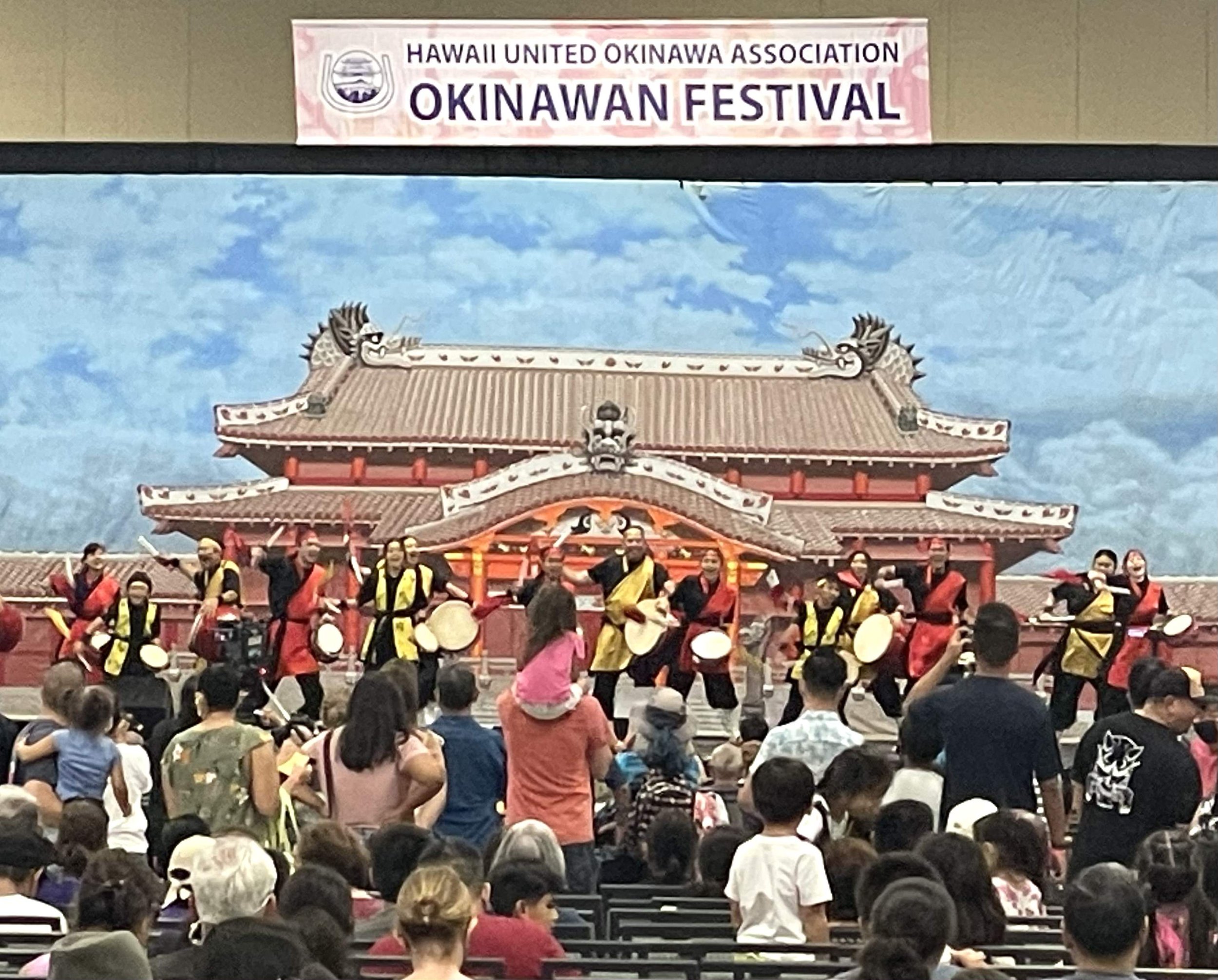Honolulu celebrates its 40th Okinawan Festival
Chinagu Eisa Hawaii
It sounded like thunder inside the Hawai’i Convention Center last Sunday after the eisa dancers took the stage, pounding their drums and stomping their feet while waving yellow and red flags overhead. Meanwhile, large cloth lions with little feet roamed the floor and the aroma of fried andagi filled the air.
The Hawaii United Okinawa Association hosted its 40th Okinawan Festival in Honolulu this weekend. The festival celebrates all aspects of Okinawan culture including food, wellness and dance, highlighting the native language and traditional symbols of the indigenous Ryukuan people of the Ryukyu Islands, or what is now known as Okinawa.
Andagi
According to the University of Hawaiʻi Mānoa, the first Okinawan contract laborers arrived to Hawaiʻi in 1900. Many followed the original twenty-six, ranking as one of the top prefectures to send immigrants to Hawaiʻi. Although their dream was to earn enough money to go home, this was not their reality and instead, they became part of the new cultural landscape that formed on the islands post contact.
Like all local food in Hawaiʻi, Okinawan food made its way here with the arrival of the first Issei destined for plantation life. Many of the dishes you will find at this festival are examples of how Okinawan food was influenced by the American military, who occupied Okinawa, originally the Ryükyü Kingdom, for over 20 years after the battle of Okinawa in WWII. Essentially, all of the canned foods and fast food restaurants brought over Americanized Okinawan cuisine, birthing dishes such as taco rice – ground taco meat with shredded iceberg, fried egg and salsa over rice – and oki dogs – a chili dog wrapped in a flour tortilla like a burrito stuffed with braised shoyu pork and shredded iceberg.
Oki Dog
Okinawan cuisine is also influenced by Chinese and Southeast Asian cuisine as well as the practices that come from being marginalized, such as eating the parts of animals discarded from white and/or affluent communities such as pig’s feet, pig intestines and chicken livers – all attributes that led to a tasty, comforting and nutritious cuisine. One of the festivalʻs most popular dishes is the pig’s feet soup (ashitibichi) – a collagen rich broth made with large chunks of pig’s feet, daikon, squash, mustard greens and konbu served with rice and minced ginger on the side. Instead of candy, Okinawans ate chunks of raw brown sugar, sometimes called black sugar, which can also be purchased at the festival in a variety of flavors. The one thing I will be sure to remember next time is to arrive early. Favorites such as jimami tofu and pig’s feet soup sell out early.
Pigʻs feet soup
Despite years of hardship Okinawans are one of the ethnicities that live the longest, according to the Blue Zones Project. They remain physically and socially active well into old age, connect to and take care of the land they live on and practice balance and moderation. It is not surprising then, that in addition to the food, one of the festival’s major focuses is wellness and environment. We sampled probiotic-rice drinking vinegars made with black sugar and shikuwasa, which tastes similar to calamansi, and watched festival goers receive massages and get their blood pressure checked. Representatives from the Genki Ala Wai Project – which aim to make the Ala Wai canal swimmable and fishable again by 2026 – were there encouraging everyone to get involved. They have produced 11,498 genki balls – balls made of EM1, clay soil, rice bran, molasses and water, used to remove pollution from soil and water – to date.
Plantation Iced Tea
As I roamed the various tables throughout the convention center I learned that the keiki-powered lions roaming the festival floor are called Shiisaa, which is a traditional symbol of protection for the Ryukuan. Something I probably would have never learned if I hadnʻt been for the festival.
The Okinawan Festival is 100 percent volunteer-run. Proceeds go to the Okinawa Center and programs that support Okinawan culture and education.
Some of the foods at this year’s Okinawan Festival:
Andagi - Round donuts made of sugar, flour, milk and eggs hand-dropped into hot oil. Simple with a plain flavor.
Andadog - A corndog made with andagi batter.
Champuru - Vegetables stir-fried with lunch meat and agedofu (fried tofu).
Oki Dog - A chili dog wrapped in a flour tortilla like a burrito stuffed with braised shoyu pork and shredded iceberg.
Chili with hot dog and rice.
Okinawa Soba, served in a hot broth with kamaboko (fishcake), shoyu pork, green onion and red ginger.
Pig’s Feet Soup - A collagen rich broth made with large chunks of pig’s feet, daikon, squash, mustard greens and konbu served with rice and minced ginger on the side.
Yaki Soba - Okinawa-style soba noodles stir-fried with vegetables and lunch meat.
Asato Family Sherbert - Strawberry and Green River (a local lemon-lime flavor)
Jimami Tofu
Brown/Black Sugar
Nama Umibudou (Sea Grapes) - fresh and salted
Turtle shell shaped crackers
Sanbaizuke (pickles)
Fresh Mochi
Plantation Iced Tea
Fresh produce by Mari’s Gardens and Aloun Farms
Asato Family Sherbert






